Special Report
These 20 Little-Known Facts About 'Jaws' May Surprise You
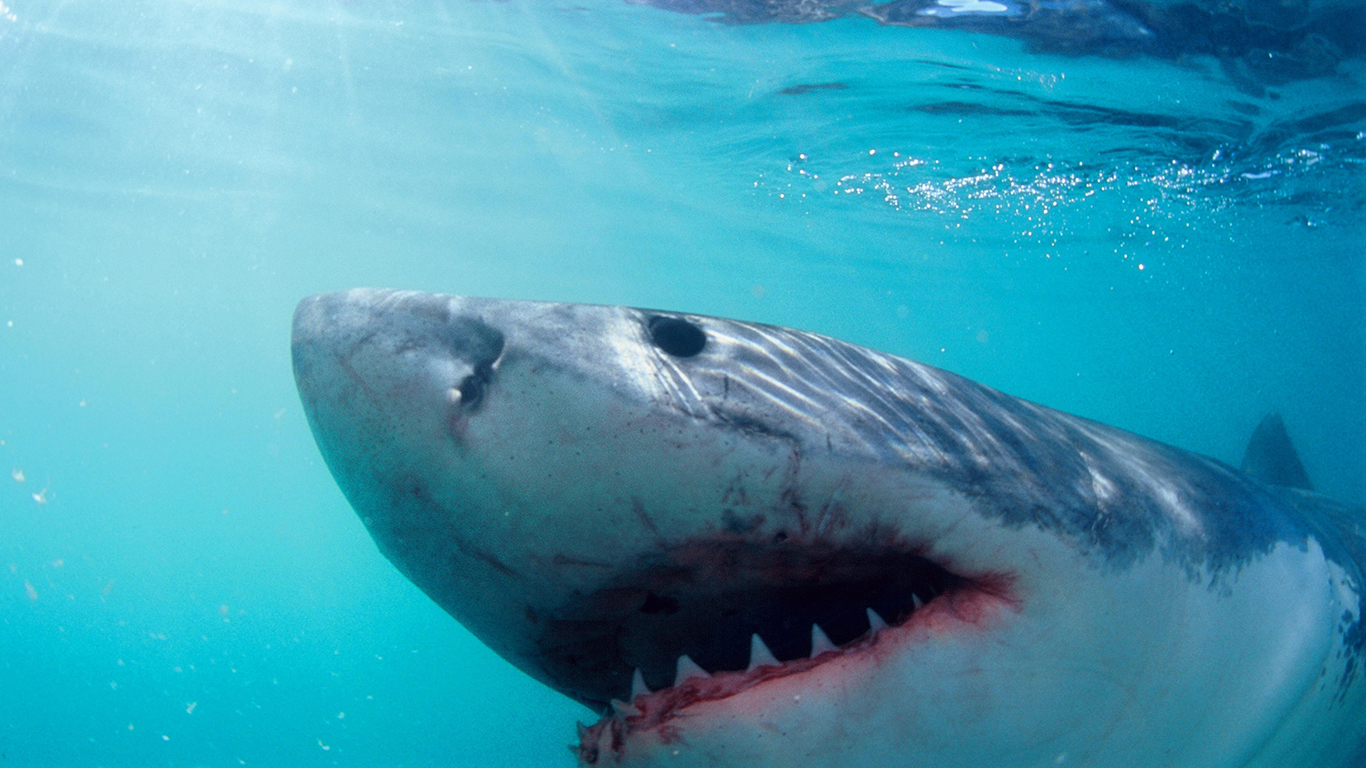
Published:

The original release of Steven Spielberg’s “Jaws” set off a chain reaction that revolutionized the way movies studios operate. The film is now not only remembered for scaring million away from the ocean in 1975, but also for pioneering today’s wide release, blockbuster movie system.
Prior to “Jaws,” big movie studios generally considered summer as a weaker movie season. The unprecedented success of Spielberg’s thriller changed that. Following its wide release in a total 464 theaters, the movie became the first to gross $100 million in theatrical rentals — the share of ticket sales revenue that belongs to the movie’s studio.
Including a 500 theater re-release in 2015 for the movie’s 40th anniversary, “Jaws” has grossed more than $470 million at the worldwide box office to date. Its legacy has endured over the years, inspiring countless summer thrillers, among them some of the highest grossing films of all time.
24/7 Tempo has compiled 20 facts about the terrifying movie based on a true story that few people know, despite the public’s decades-long fascination with it.
Click here to see 20 facts you didn’t know about “Jaws.”

1. An actor’s touch
Numerous actors were considered for some of the movie’s most iconic roles. Lee Marvin was the first choice for haggard fisherman Quint, ultimately played by Robert Shaw. Jon Voight, Timothy Bottoms, and Jeff Bridges were all asked to play Richard Dreyfuss’s Hooper. And Robert Duvall and Charlton Heston were both considered for Chief Brody before Roy Scheider took the part.
[in-text-ad]
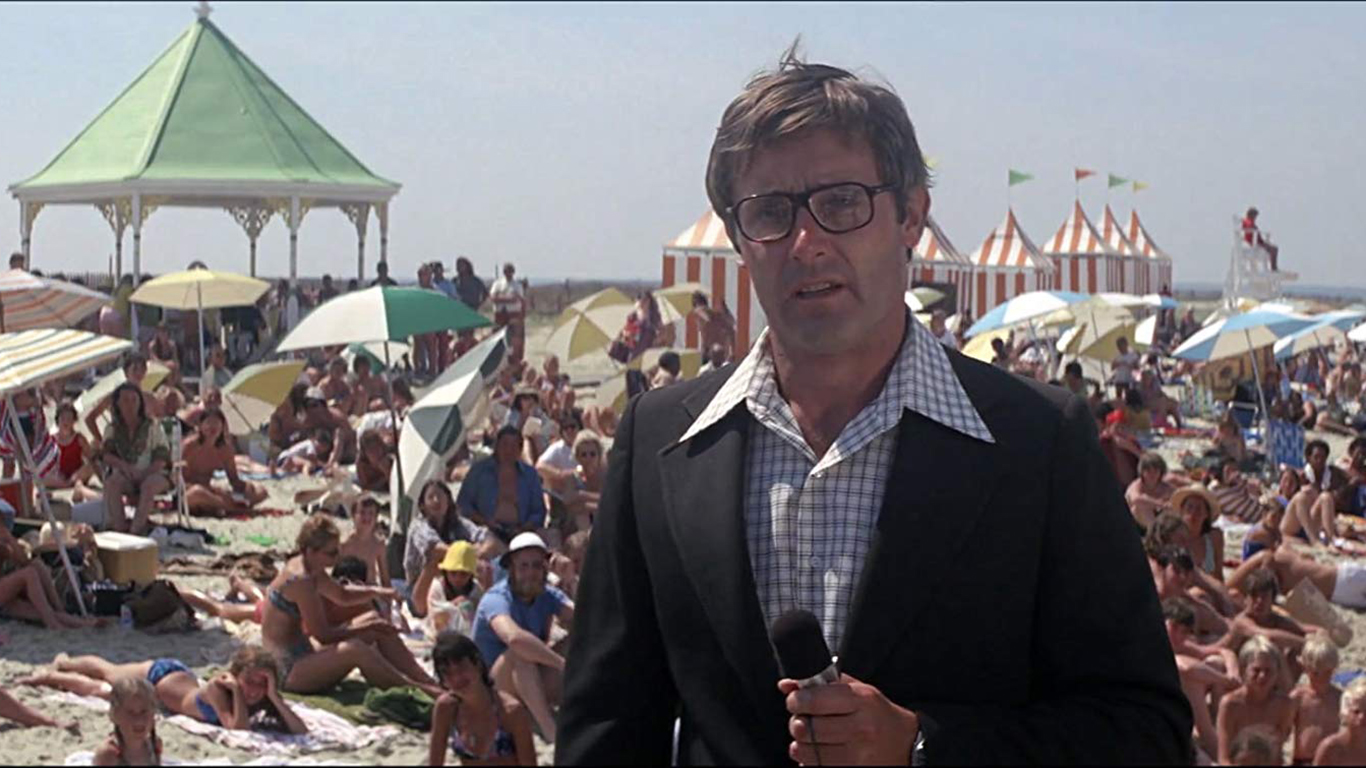
2. Writer on the beach
Peter Benchley, the author of the novel “Jaws,” makes a cameo in the film as a news reporter delivering a report on the beach. Benchley actually worked at the Washington Post before writing his famed novel.
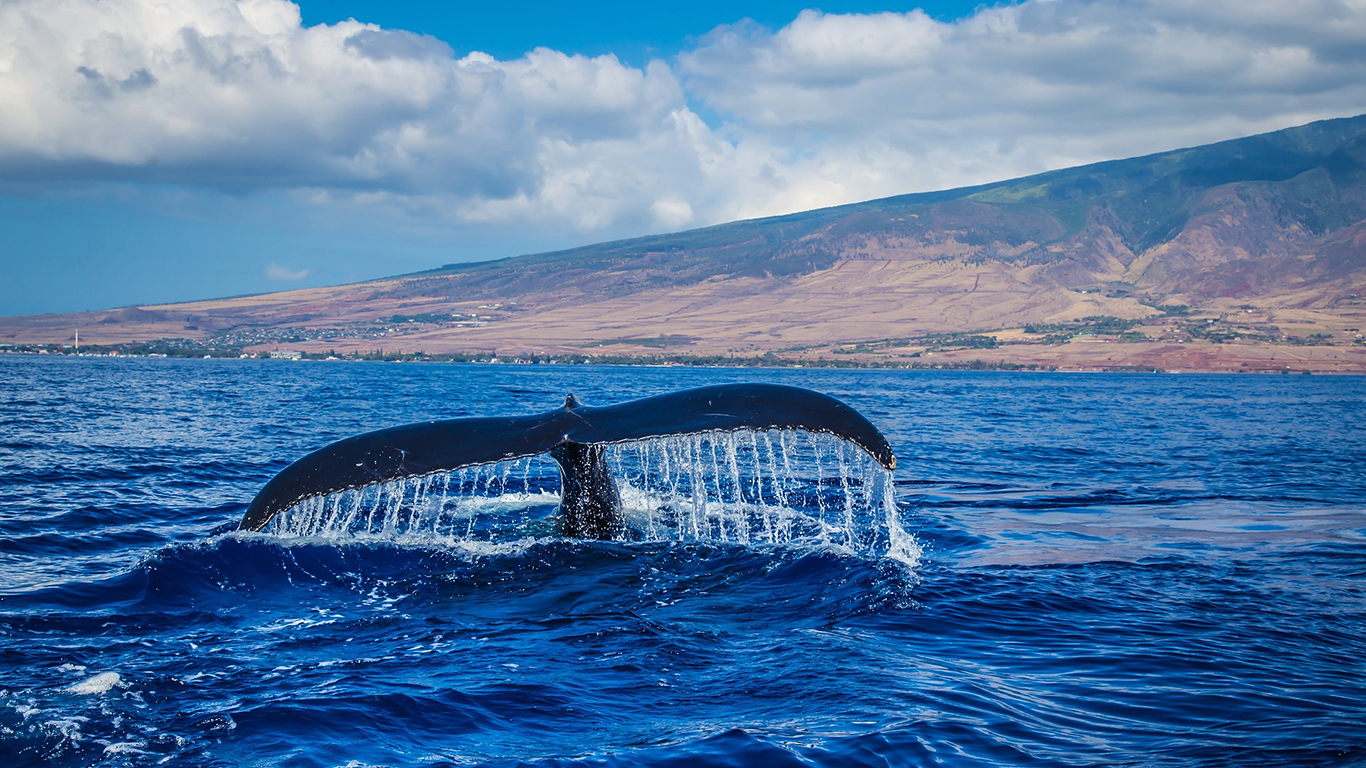
3. A lucky break
Steven Spielberg was not the first director to be tied to the project. The original filmmaker, Dick Richards, was taken off the movie after repeatedly referring to the script’s shark as a whale during a production meeting.
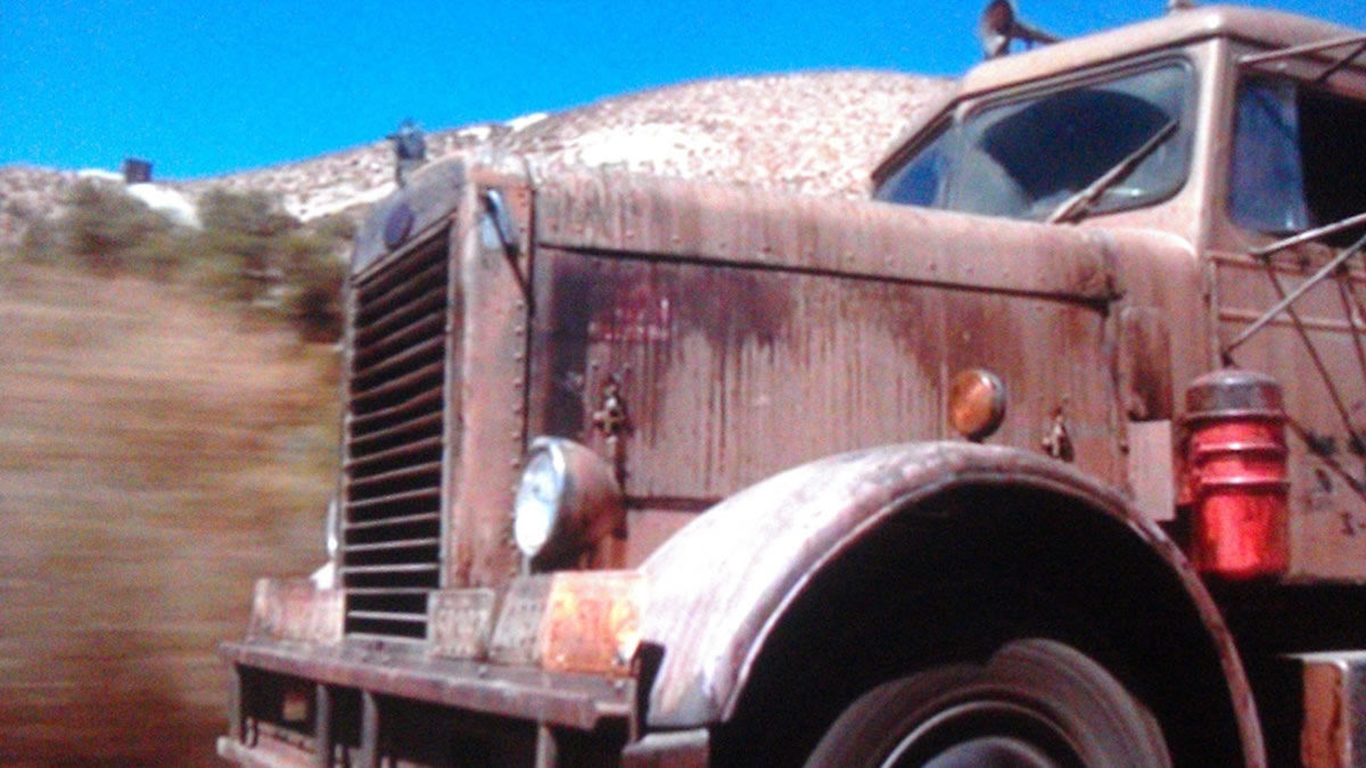
4. ‘Jaws’ on land
Spielberg reportedly asked the movie’s producers, David Brown and Richard Zanuck, to watch his 1971 movie “Duel” when he was applying for the job because, according to the director, “‘Duel’ is basically ‘Jaws’ on land.” In fact, the sound that is heard as the shark descends to the ocean floor in “Jaws” is the same rumble heard as a truck flies off a cliff in “Duel.”
[in-text-ad-2]
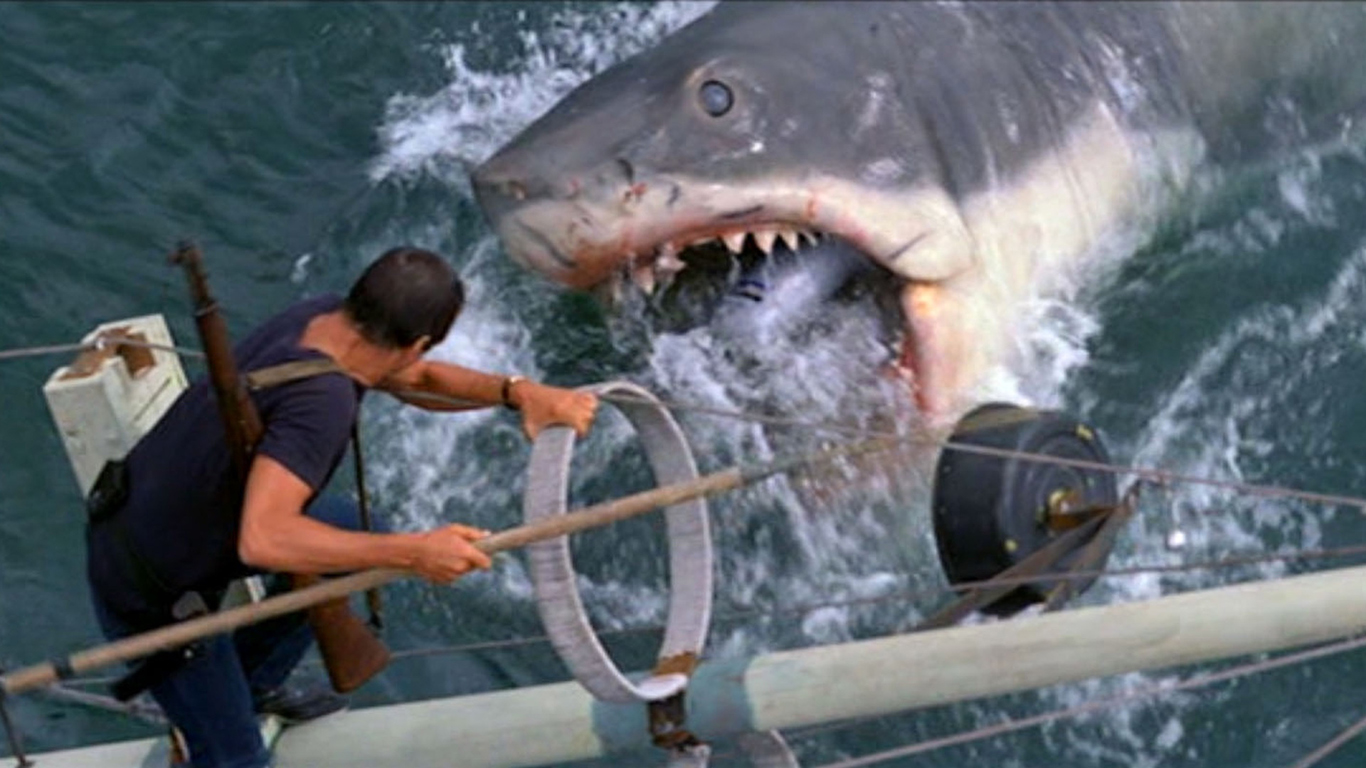
5. One big shark
Production designer Joe Alves is to thank for the creation of the film’s shark — which ultimately weighted 1.2 tons and measured 25 feet long. Alves would go on to work as a production designer on “Jaws 2” and the director of “Jaws 3-D.”
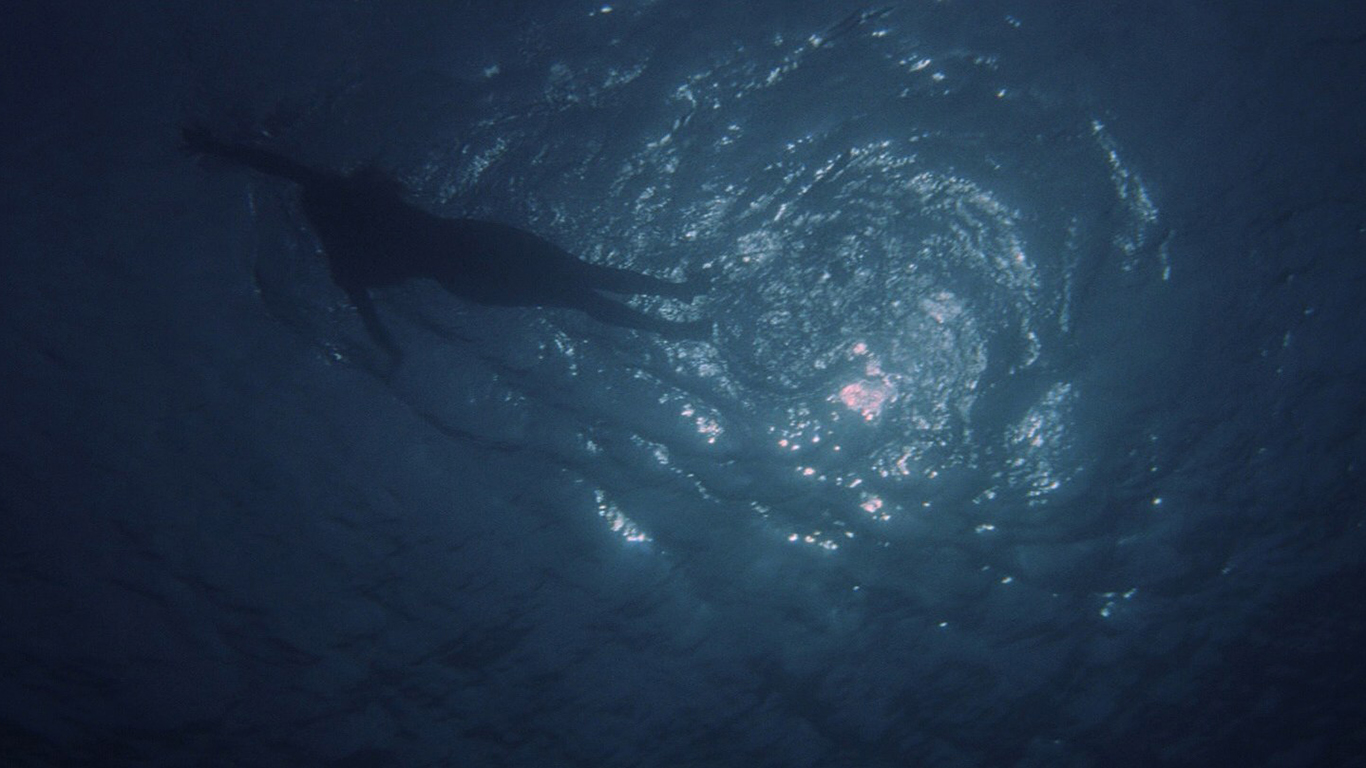
6. A silver lining
Three versions of Alves’ shark design were created for the film’s shooting. The units were plagued with mechanical problems, arrived to the set late, and significantly delayed shooting. These problems may have ultimately benefited the movie, however, as they forced script changes that emphasized the “less is more” approach to showing the shark. The shark doesn’t actually appear until one hour and 21 minutes into the movie — which adds to the suspense.
[in-text-ad]

7. Longer than expected
Just how delayed was the shoot? Shooting was only expected to take 55 days. It ended up taking a total of 159.

8. Sharks and lawyers
Spielberg nicknamed the mechanical beasts “The Bruces” after his attorney at the time, Bruce Ramer. The name would surface again in 2003 as the name of the shark character in the Pixar movie “Finding Nemo.”

9. Man’s best friend
The director added another personal flourish to the movie when he cast his own dog, Elmer, in the role of Brody’s pet. Elmer would go on to appear in two other Spielberg flicks: “Close Encounters of the Third Kind” and “1941.”
[in-text-ad-2]
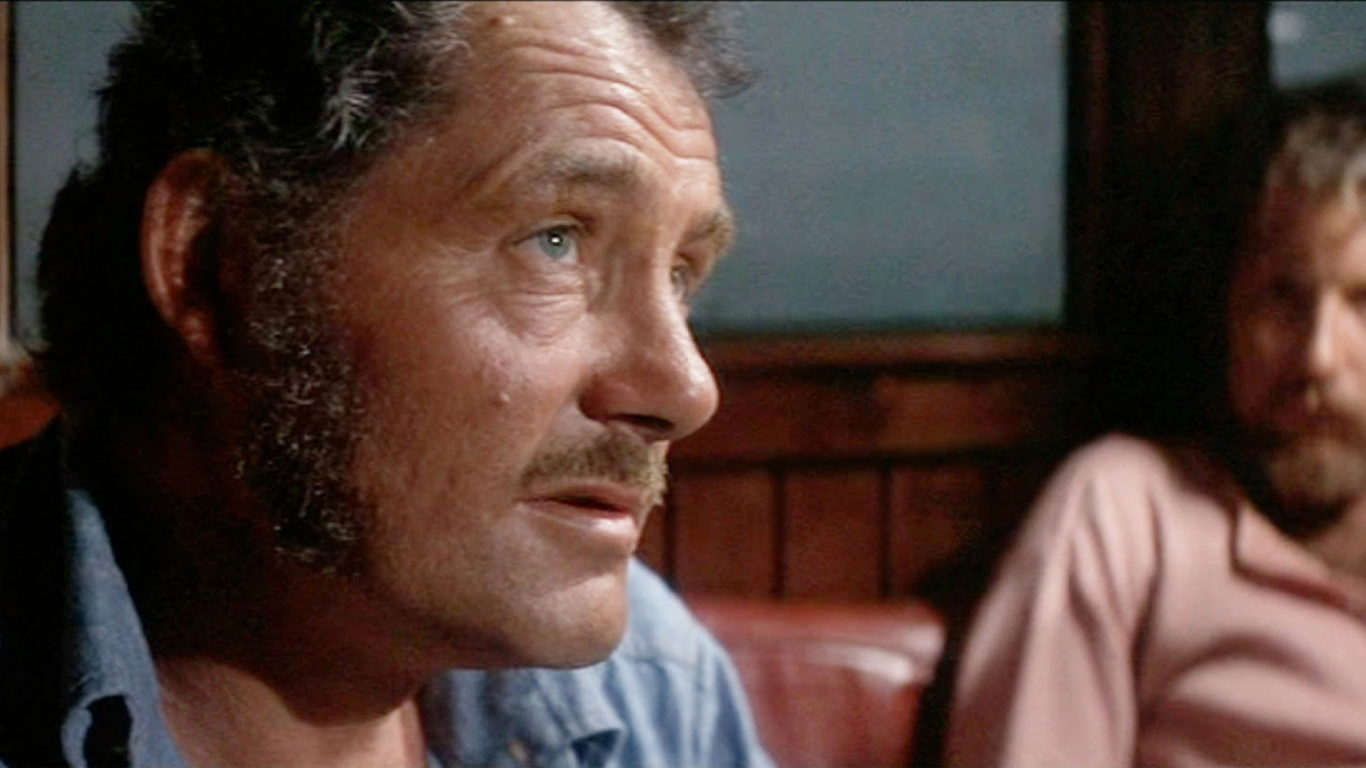
10. Taxman
British actor Robert Shaw spent his weekends in Canada during the shooting in an attempt to limit accruing additional taxes already owed to the IRS. Shaw would ultimately forfeit his salary as a result of charges of tax evasion. He passed away three years after the release of “Jaws.”
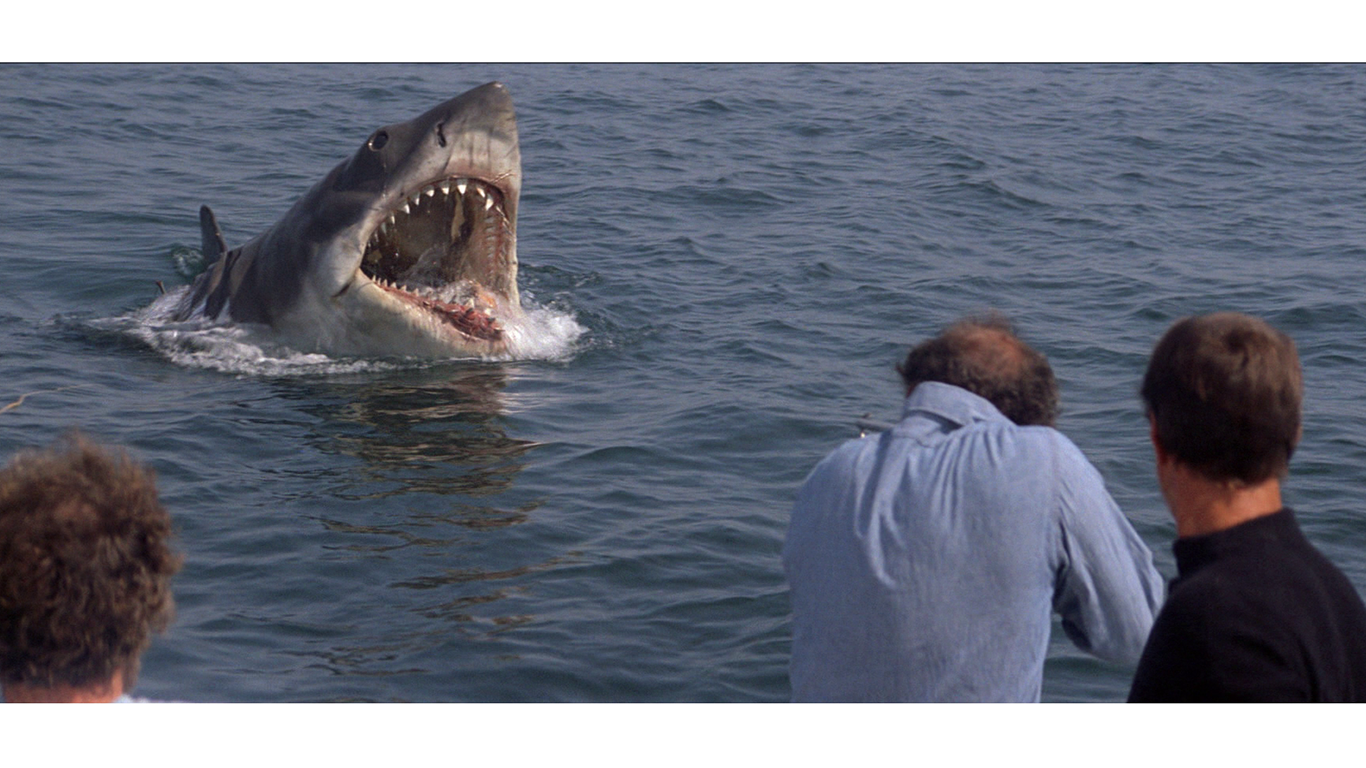
11. An explosive finale
The book ends with the monstrous shark dying of blood loss in the water. Writer Peter Benchley was so emphatically against Steven Spielberg’s decision to instead blow up the shark that the director had him removed from the set.
[in-text-ad]
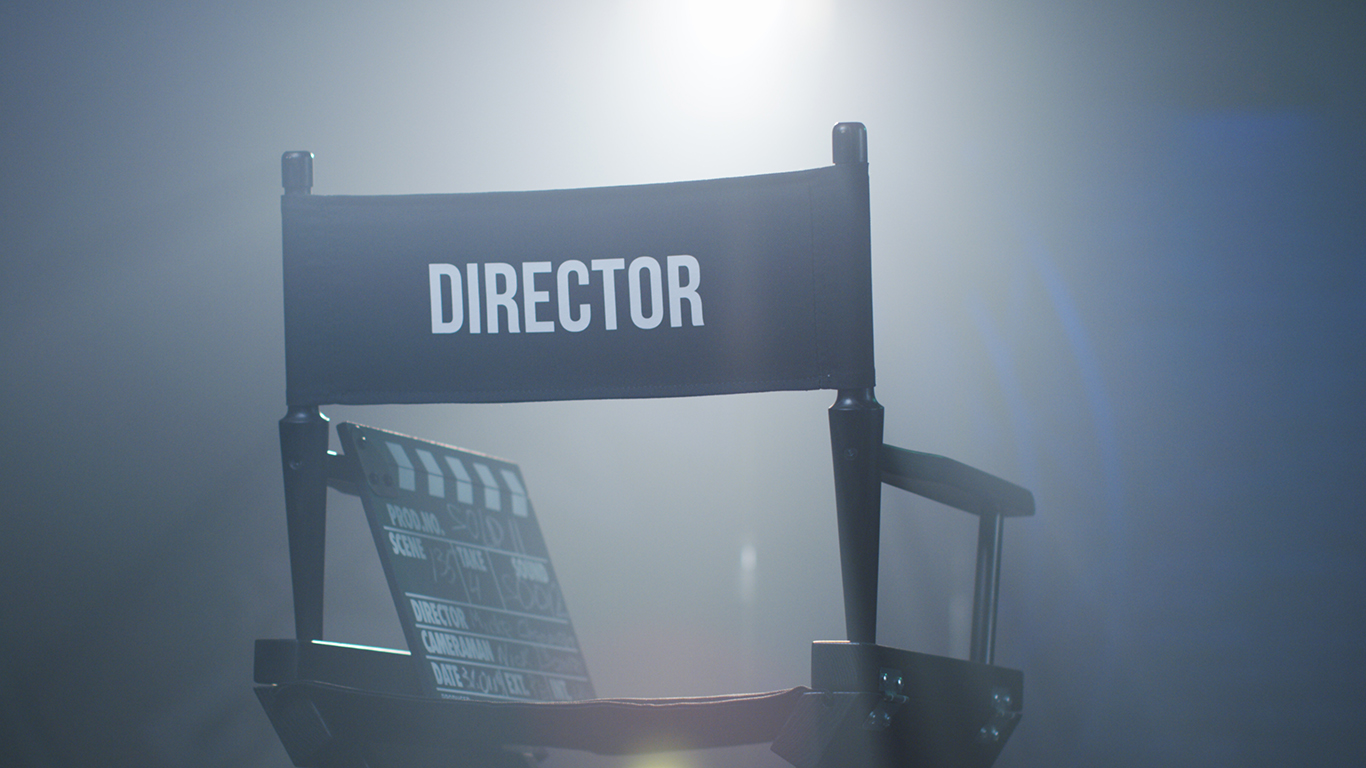
12. Absent leader
Despite greenlighting the exploding shark scene, Spielberg actually did not direct it. At the time it was filmed, Speilberg had already left the set to begin the movie’s post production, leaving the shot to his second unit.

13. “Jaws” ‘stalked’ Spielberg
Stressed out by the film shoot’s many technical setbacks, Spielberg took to sleeping with a stalk of celery under his pillow. Supposedly, the aroma had a calming effect. It didn’t stop the director from experiencing a panic attack following production, though.

14. Shooting stars
The film’s production wasn’t completely filled with bad luck. During a scene in which Brody searches for the shark in the water, a beautiful meteor can be seen flying by in the night sky. Spielberg was fortunate enough to capture the moment.
[in-text-ad-2]
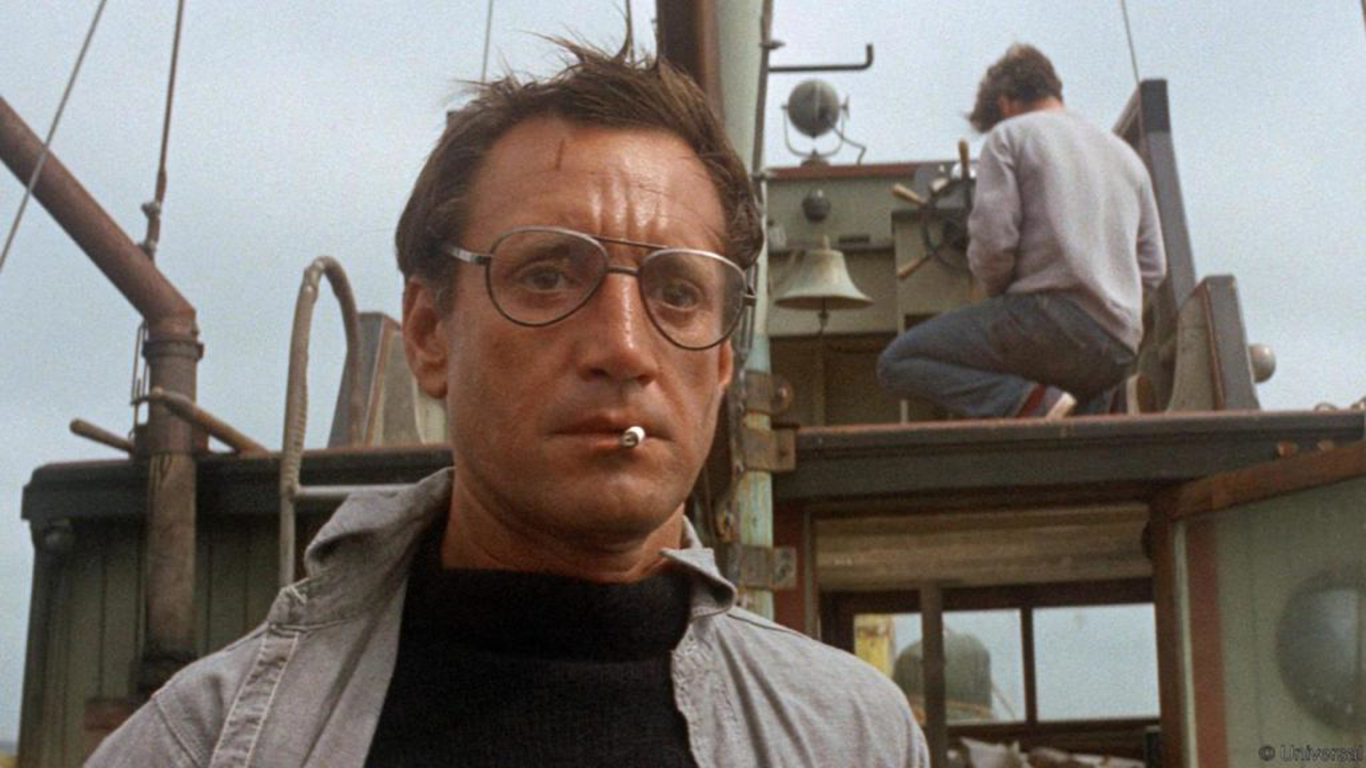
15. Good acting
Another iconic Brody moment is when the character delivers the line, “You’re gonna need a bigger boat,” with a cigarette dangling from his lips. According to writer Carl Gottlieb, actor Roy Scheider improvised this line.
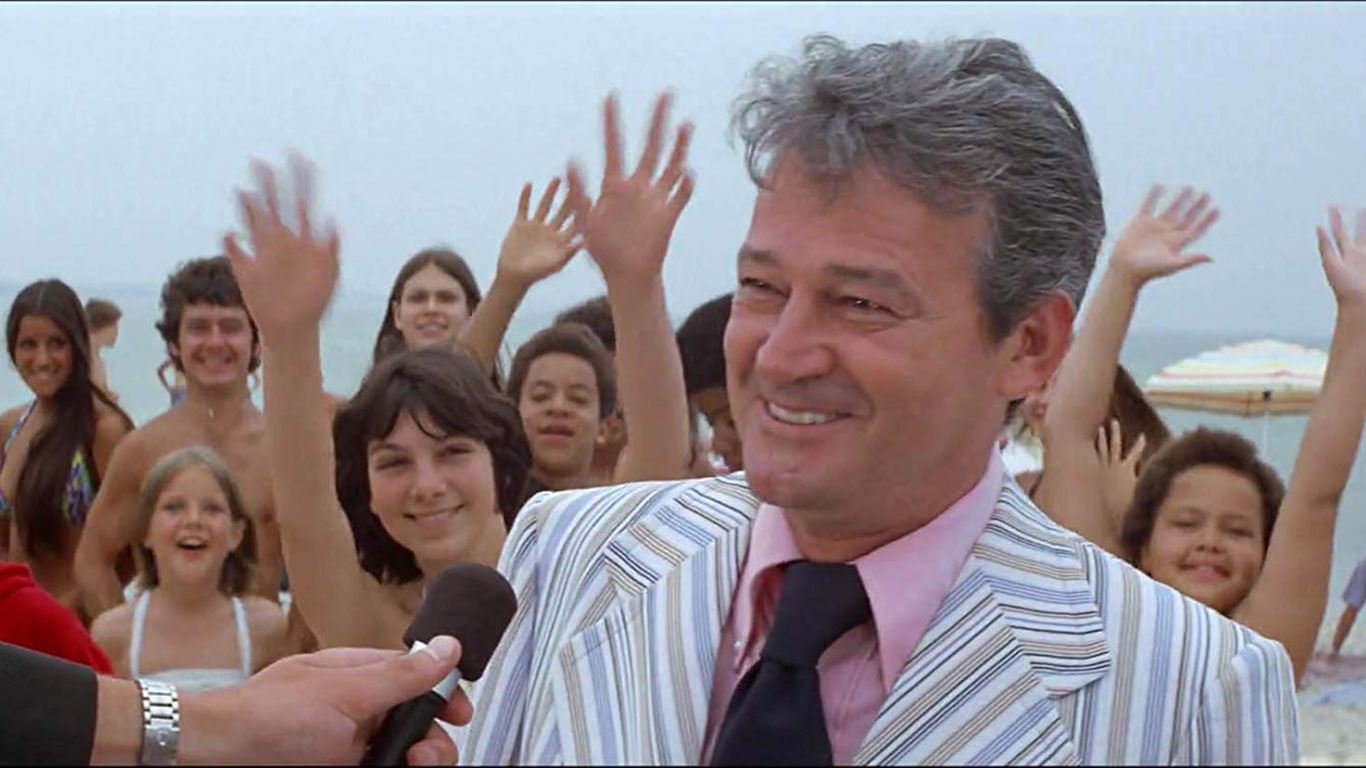
16. A foul situation
Murray Hamilton, who plays the mayor of Amity in the movie, had at least one unpleasant night during filming. After enjoying a few drinks one evening, Hamilton was sprayed by a skunk outside of his hotel room. The actor reportedly mistook the animal for a small dog.
[in-text-ad]
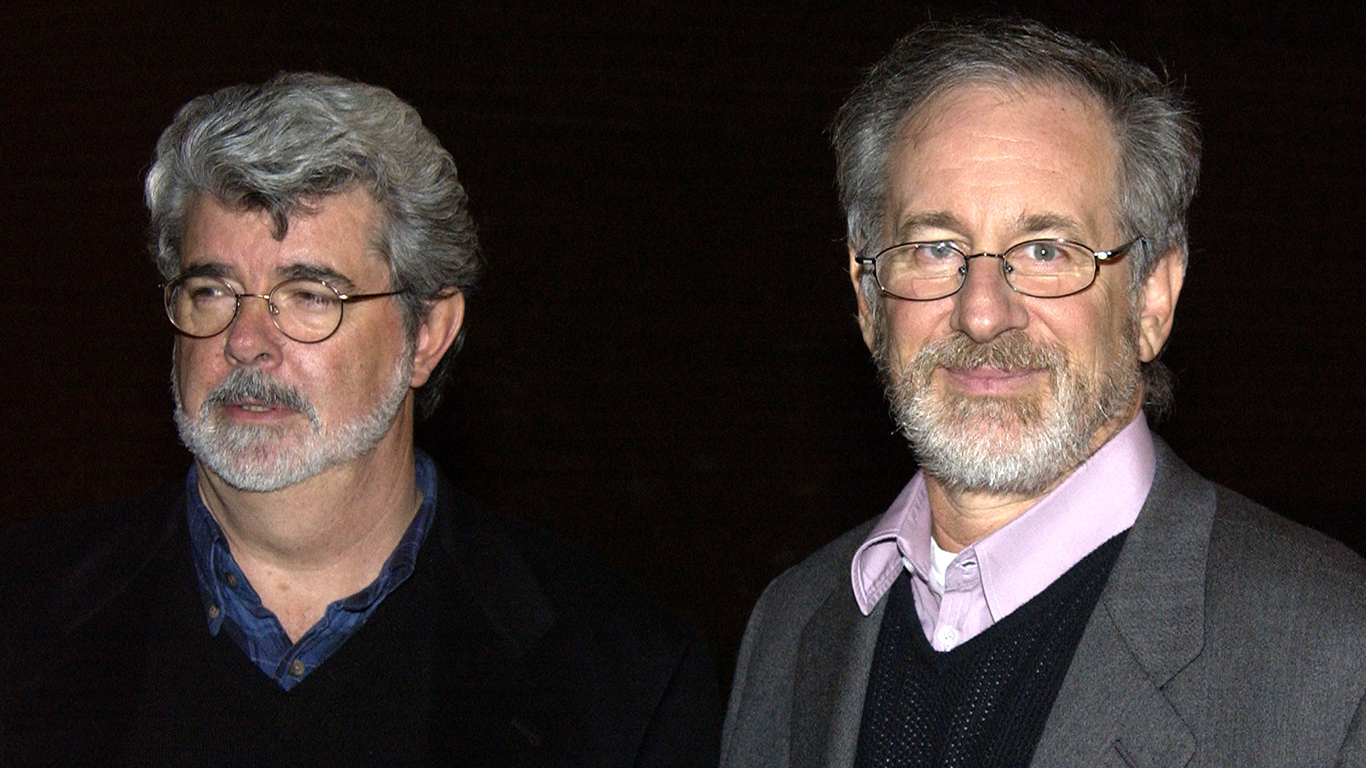
17. Shark attack
Misfortune also struck director George Lucas when he visited the set in his pre-“Star Wars” days. While closely examining the large mechanical shark, Lucas accidentally got his head stuck in its mouth. The machine’s controls jammed, and the jaws had to be pried apart to free the curious filmmaker.
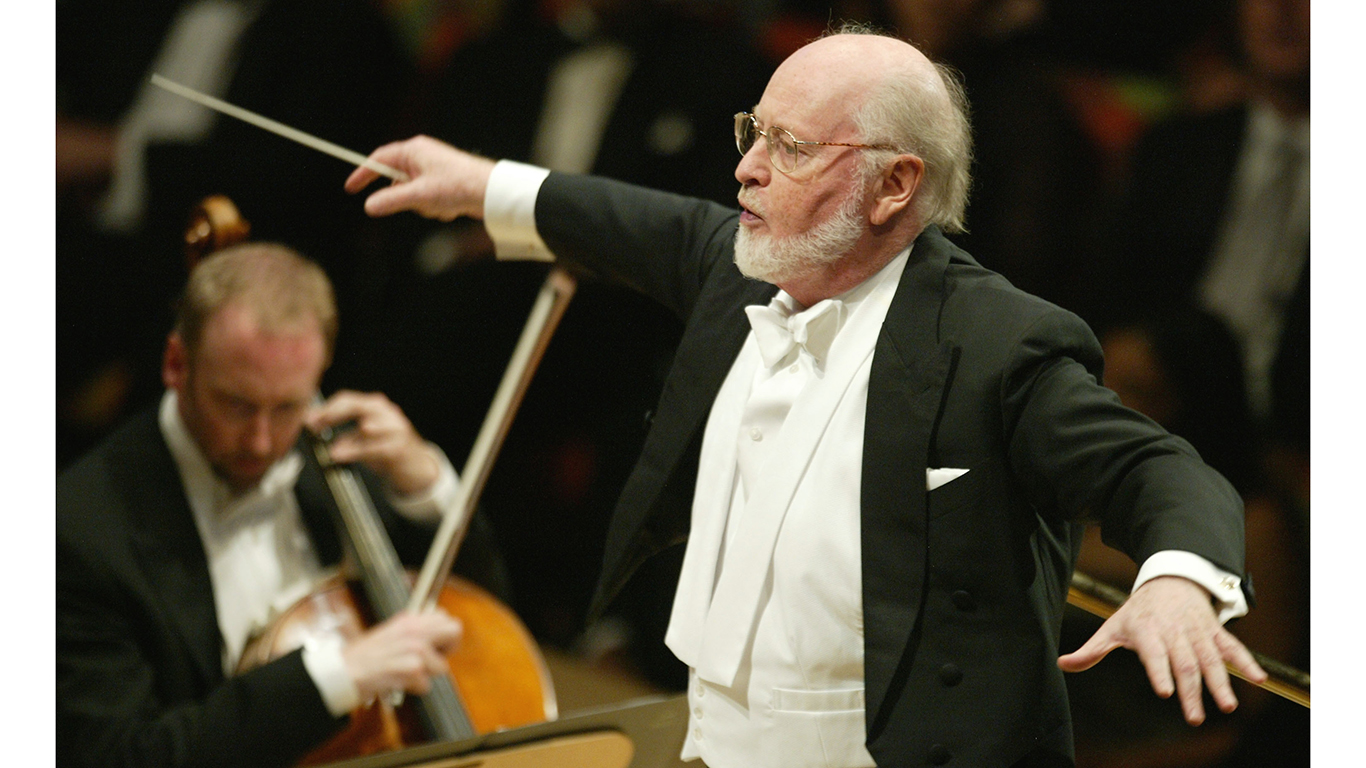
18. The sound of music
Spielberg originally thought composer John Williams was joking when he played the score of “Jaws” for him. The director would later credit the theme — which won an Academy Award — for being “responsible for half of the success of (the) movie.”
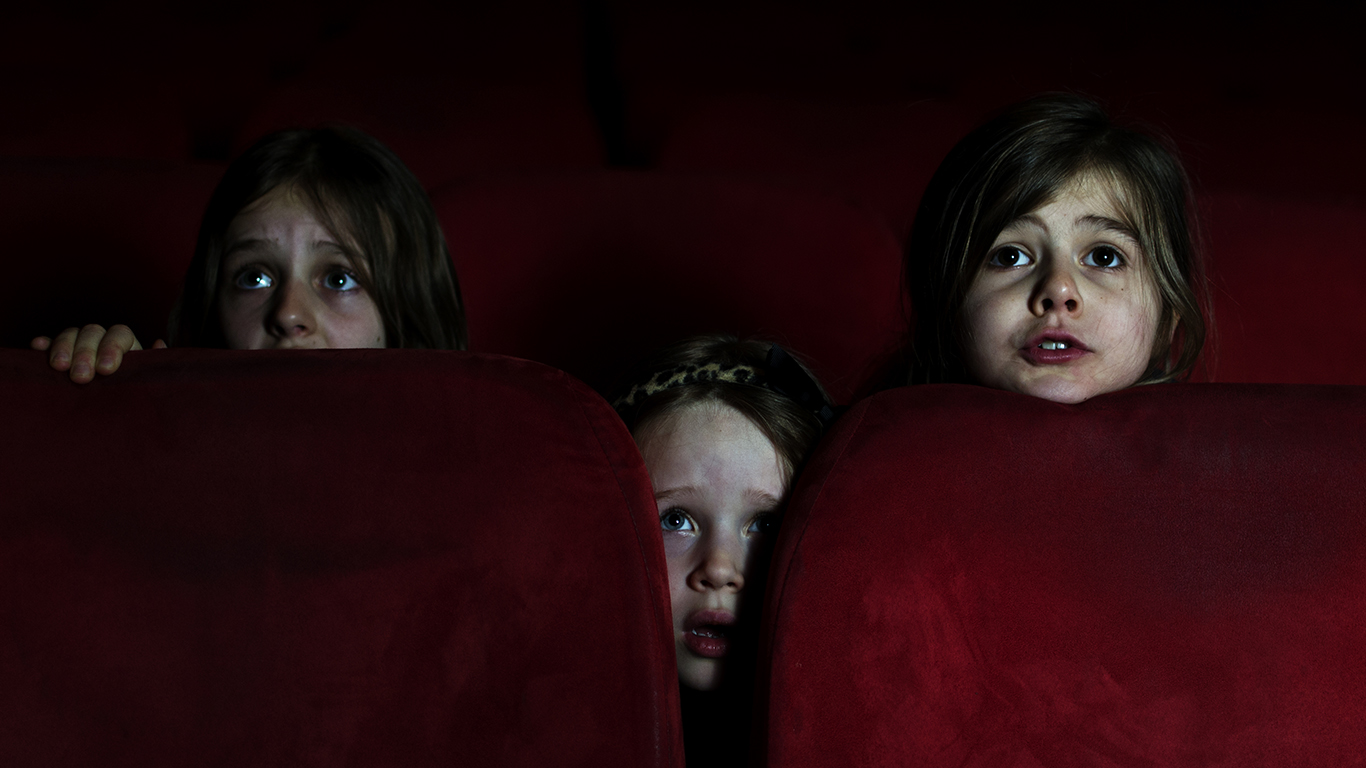
19. Parental guidance suggested
The Motion Picture Association of America (MPAA) originally gave “Jaws” an R rating but settled on PG following some cuts by the filmmakers. Perhaps feeling that his movie was too violent for young children, Spielberg later suggested the MPAA adopt a PG-14 rating, prior to the organization creating PG-13.
[in-text-ad-2]
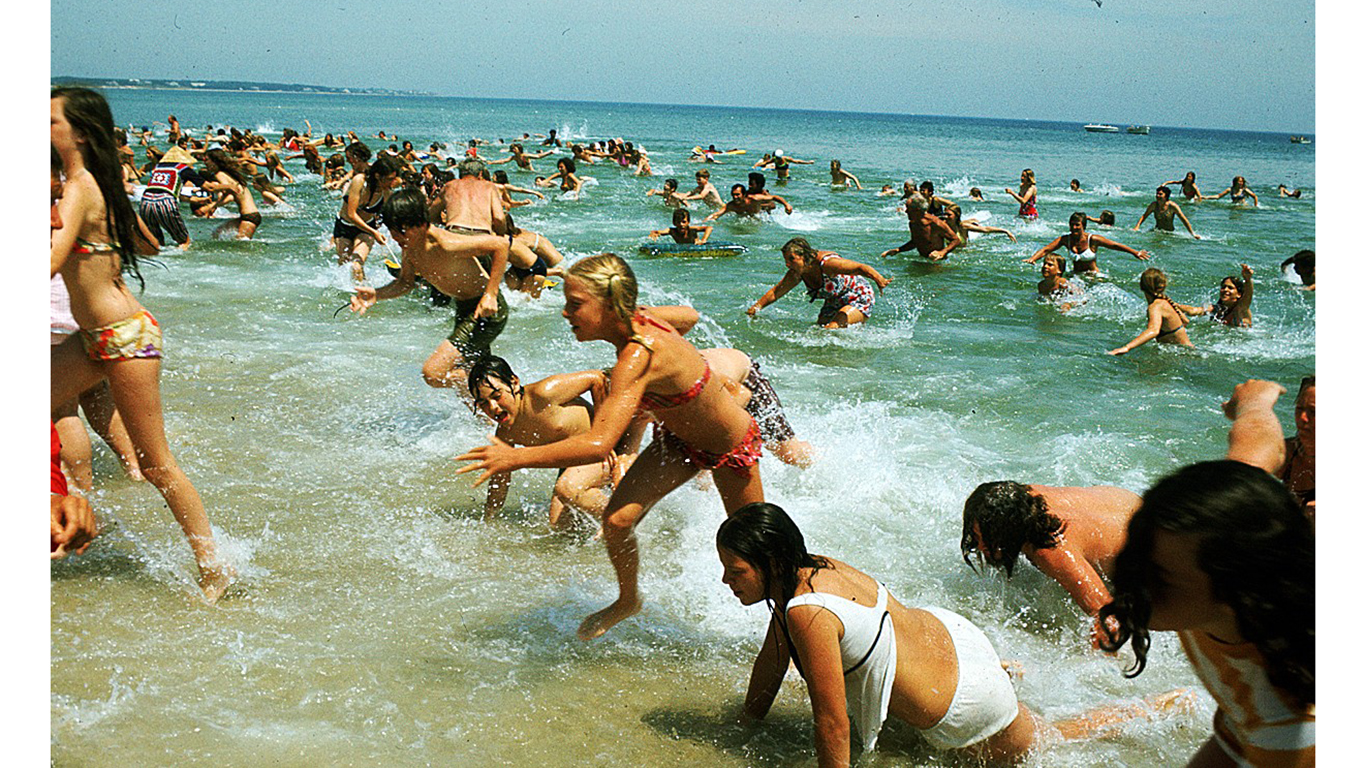
20. Birth of the summer blockbuster
According to producer David Brown, the movie’s release was purposefully aligned with the season during which people would be spending time at the beach and in the ocean. Before “Jaws,” summer was considered a financially weak time to release movies. Afterwards, it became the standard period for releasing big-budget movies that clean up at the box office.
Thank you for reading! Have some feedback for us?
Contact the 24/7 Wall St. editorial team.